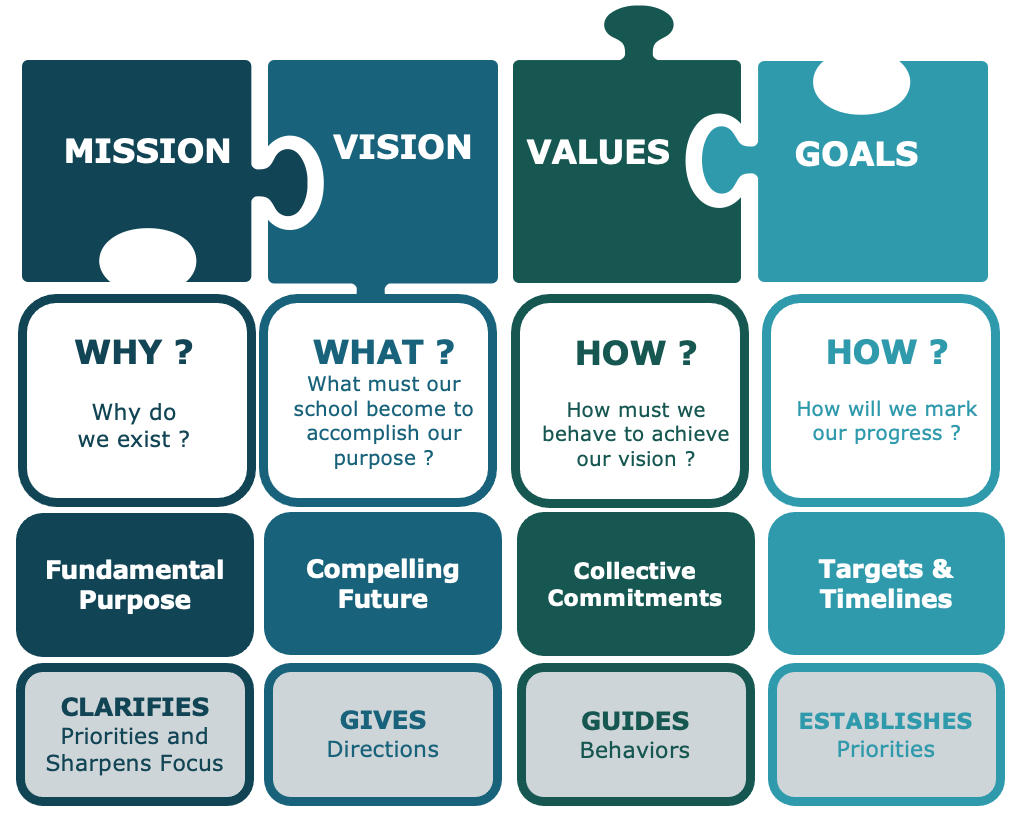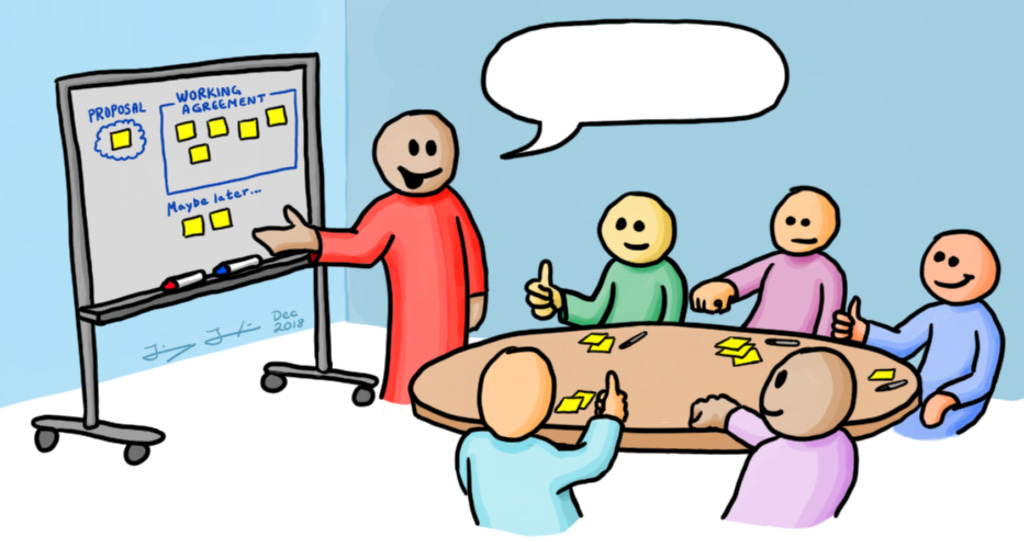Week 3: Crafting Value & Vision- Mission
Welcome to my newsletter "Strategy for Success"🚀, where I will unfold my journey week by week toward organizational transformation. Each edition is a passport 🛂 to a week in my shoes, unveiling the challenges faced, and strategies implemented to redefine how we work and shape the future of our organization.
Journey till date:
Week 1: Stakeholder collaboration and introduction. Click here to read more about the first week.
Week 2: During the second week, defined the initial measurement system and performed a Gemba walk to further understand the current state. Click here to read more about the second week.
This week, we will form a common Value and Vision-Mission for the organizational agile transformation.
Now grab your preferred beverage, take a seat, and get ready to explore the agile revolution.
If you have not already, I am inviting you to subscribe to this weekly newsletter.
Value Formation
Value formation at the leadership level was crucial for successful organizational transformation. This morning, we gathered to discuss the core "values."
As I stepped into the facilitator's shoes, my focus was not just on leading the session but on creating an environment where the team's collective wisdom could shine.
As the leaders of various departments settle in, Jon sets the stage - "Today, we set out on a collaborative journey to shape our organization's future. With the brushes in each of your hands, we will collectively create a picture that motivates and directs us."
I started by sharing my guiding mantra - “Every voice matters, every story is a thread in the tapestry we're weaving."
🛠️Tool-Of-The-Trade: Working Agreement - Setting the Stage for Success - Prioritize creating a safe environment where vulnerability and open dialogue were encouraged. Icebreakers, active listening, and genuine interest in their individual perspectives lay the foundation for a productive session.
One facilitation tip that resonates profoundly with me is the power of storytelling.
We kicked off with storytelling. Each of them had a unique journey within this organization, and I wanted those stories to be the bedrock of our vision. So, I opened the floor, "Think back to a moment that defined us. A triumph, a challenge, something that captures the spirit of who we are. Who'd like to share?"
“I remember when our team pulled off that data migration project against all odds. The teamwork we showed was extraordinary,” said Steve. This was followed by many such stories where they recounted projects where their team faced unprecedented challenges.
Jon asked me to go over the facilitation procedures so that everyone is on the same page regarding the next three hours of the exercise.
Jon emphasized that we’re not making up something new here. Our values already do exist. This is a process of noticing, discerning, and affirming the implicit expectations we all share as a team. And simply by making them more explicit, we give them more power and influence. We become more conscious and more aware. We begin to hold ourselves and others more accountable
Value Formation - Facilitation Steps:
Step 1: We set up small group discussions around the key question "What themes and values emerge from these stories? Let’s distill the essence that makes us who we are"
Step 2: Each group received a set of pre-defined "value cards" and blank cards to add their own. Groups then sorted and clustered cards based on similarities, leading to discussions about shared priorities.
Step 3: Leaders were encouraged to explain their reasoning, fostering deeper understanding and consensus. Sharing stories of how they embodied the chosen values in your daily work.
Discuss how different values guide each group's decisions and the resulting outcomes.
Discuss some hypothetical situations or past experiences and they would apply their proposed values to make a decision.
Refine the prioritized values based on the experience, ensuring alignment with ABC’s overall goals.
By lunch, we had a rough list of values, written on the board. Now it was all about choosing the best ones. Each value got a good debate, everyone arguing why it mattered. I used Affinity Mapping & Dot Voting to help them converge and decide.
"That’s us - Excellence, Innovation, Respect, Customer-Focus, Accountability, and Decisiveness" Jon read the canvas.
Vision Formation
With our values identified, the next day we ventured into crafting a vision and mission. For this, I requested everyone to review the SWOT analysis exercise we did in Week 1. This would help in setting the stage.
I threw out the question: "Imagine a day when our organization is at its absolute best. What does that look like?" The room hushed in contemplation.
"I see a workplace where creativity flows freely," envisioned Ajay.
"A place where every team member feels a sense of purpose,” added Tina.
Vision Formation - Facilitation Guidelines:
Guide participants to translate the aspirations and success markers into a concise statement.
Focus on using clear, active verbs, vivid language, and a future-oriented perspective.
Iterate and refine the statement through group feedback and discussions.
Present the draft vision statement to a broader audience within the unit for feedback and buy-in.
Incorporate final refinements based on the broader feedback.
The vision statement collaboratively formed communicated a commitment to fostering a culture of empowerment and excellence while consistently delivering value to customers. It served as a guiding light for the agile transformation journey, reinforcing the unit's focus on customer service and value delivery.
Our Vision
"Empowering Excellence, Delivering Value"
Mission Formation
We then shifted the focus to purpose. "Why do we want this agile transformation?" The leaders leaned in, contemplating the deeper meaning and reason behind the transformation.
Mission Formation - Facilitation Guidelines:
Distilling the essence: Based on the discussions, identify key themes and common threads that define the purpose and desired outcomes for the agile transformation.
Drafting the statement: Collaboratively write a concise and clear mission statement that captures the leadership team's commitment to leading the agile transformation through specific actions and desired outcomes.
Focus on impact: Highlight the positive impact the agile transformation will have on customers, employees, and the organization as a whole.
Actionable language: Use action verbs to emphasize the proactive role the leadership team will play in driving the transformation.
Our Mission
"Our mission is to relentlessly cultivate a culture of continuous learning and collaboration, and deliver exceptional value to our customers through innovative solutions and unparalleled customer service. By empowering our teams to excel, we aim to set new standards in excellence, making a positive impact on the way we work and the value we provide."
Goal Formation
Now, with stories, vision, and values as their compass, the leaders faced the river of transformation. "How do we cross this river? What are our stepping stones?" they pondered.
"Let’s connect next week to set goals that bridge the gap between where we are and where we want to be," proposed Jon.
I gave them a tour of the Measurement Design System created in Week 2 and described how to create goals using the Balanced Score Card format. I also scheduled a brief training next week on Monday to lead them through the OKR course.
Jon was also planning for a town hall meeting next week with all business unit associates to communicate the Vision, Mission, and Goal after it was formed.
Finally, as the sun set for the weekend, we reached our goal – we have defined our Values, Vision, and Mission statements. Everyone felt happy and relieved, and closer than ever after our journey together.
"These aren't just words," Jon said, looking at everyone. "They're like pillars to hold us up, guide our choices, and make us want to do good. They're the compass that will show us the way, even in the dark."
And in that moment, with the twilight settling, we knew it wasn't the end, but the beginning of a wonderful journey, guided by the values we rediscovered together.
As the weekend approached, I left with a heart full of satisfaction. It wasn't just about crafting the perfect words; it was about witnessing a team come together. And I knew, as they embarked on their journey, their values and vision statement would be their North Star, guiding them every step of the way.
🛠️Tool-Of-The-Trade
1. Working Agreement
What is a Working Agreement:
A Working Agreement, also known as Team Norms or Group Agreements, is a set of guidelines and principles collaboratively established by a team to govern their behavior, interactions, and processes. As a facilitator, this tool will help you in the following ways:
Establishes Clear Expectations
Promotes Team Cohesion
Addresses Diversity
Enhances Communication
Improves Accountability
Mitigates Conflict
Boosts Productivity
How do facilitate the formation of a Working Agreement:
Brainstorming: Use brainstorming techniques to generate ideas for the working agreement. Encourage everyone to contribute their thoughts and suggestions.
Prioritization and refinement: Once you have a list of ideas, prioritize them based on importance and feasibility. Then, refine the wording to ensure clarity and conciseness.
Visualize: Consider using a visual tool, such as a mind map or chart, to represent the working agreement. This can make it easier for everyone to understand and remember.
For more, read here → Code of Conduct
Keep in mind that the active adoption and continuous reinforcement of a working agreement by all team members is what makes it successful. In addition to helping to create the agreement, a facilitator's job is to create an atmosphere in which it is actively accepted and incorporated into regular team meetings.
💡Tips-Of-The-Week
This week was focused on VMG (Vision-Mission-Goal) & Value formation.
For this:
Create a positive and inclusive atmosphere from the start. Emphasize that every voice is valuable.
Encourage leaders to express their perspectives on what makes a vision, or mission compelling. This sets the tone for the discussion.
Encourage specificity and vivid descriptions.
Ensure that the vision is aligned with the organization's core values and is embraced by the team.
Ensure consensus and commitment from the leaders before finalizing the vision.
A visual representation or tagline can make the vision memorable and easy to communicate.
End on a positive note, emphasizing the importance of everyone's role in realizing the vision.
Reflections
Time for you to reflect on this week’s question.
How will the vision be communicated to different stakeholders? How do different stakeholders perceive its benefit?
How does your organizational value reflect the desired organizational culture? Will it foster the behaviors needed to achieve your vision?
How does our mission translate into clear strategic priorities and day-to-day operations? How will it guide decision-making across the organization?
Book Recommendation
This week, I recommend reading the book “Leading Change” by John Kotter.
In his book "Leading Change" Kotter provides an eight-step model with a clear roadmap for leading successful change initiatives. It outlines actionable steps and avoids theoretical jargon. With lots of case studies and practical examples, it emphasizes the crucial role of leaders in driving change and offers guidance on building trust, fostering collaboration, and championing the vision.
Whether you're an executive, manager, or team member, this book can equip you with the knowledge and skills needed to navigate change effectively and build a stronger, more adaptable organization.
I recommend this book to anyone who wants to make a meaningful impact.
Further Reading
From Siloed to Strategic: Aligning Your Leadership Team with a Shared Vision & Values
The Order: Vision, Mission, Goals, Strategies, Objectives, Tactics
https://www.linkedin.com/pulse/order-vision-mission-goals-strategies-objectives-tactics-germaise/
👥 Spread the Word
To start receiving new posts right in your inbox, inviting you to subscribe to this weekly newsletter.
Invite your colleagues, friends, and enthusiasts to join this transformative ride. The more, the merrier!
📝 Your Feedback Matters!
I have started writing this newsletter and your feedback will help me improve it further. You may leave your feedback in Comment on how can I make this newsletter valuable for you.







